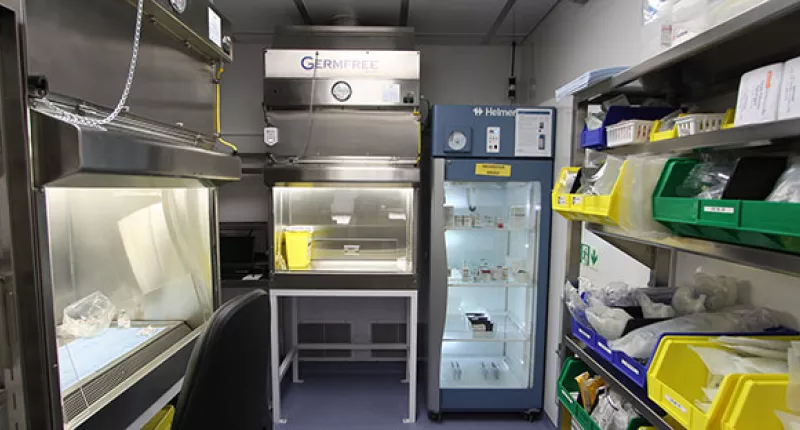Understanding How the Regulation Impacts Refrigeration
Facilities are under pressure to comply with The United States Pharmacopeia (USP) Chapter <800> Hazardous Drugs: Handling in Healthcare Settings. All facilities must be in compliance by December 1st, 2019. The new general chapter, USP 800 Hazardous Drugs in Healthcare Settings, has created a lot of confusion around what types of refrigerators are suitable for the hazardous drug room. Although there is no universal standard for an USP 800 compliant refrigerator, there are some important USP 800 guidelines to consider when purchasing a refrigerator for your hazardous drug room.
USP <800> Refrigerator Checklist
Download this simple and easy to follow checklist to ensure your refrigerator storage meets USP <800> recommendations.
Frequently Asked Questions
This FAQ resource provides answers to your pressing refrigerator questions in regards to General Chapter USP <800>.
Approved Cleaning Solutions
This resource highlights tested and approved cleaning agents and solutions for refrigerators placed inside your USP <800> clean room.
What's Inside the Chapter About HD Storage?
Here is what USP <800> says about HD storage in a refrigerator:
Refrigerated antineoplastic HDs must be stored in a dedicated refrigerator in a negative pressure area with at least 12 ACPH [e.g., storage room, buffer room, or containment segregated compounding area (C-SCA)].
Nonhazardous drugs should not be stored with hazardous drugs. Antineoplastic hazardous drugs must be stored in a dedicated refrigerator, and that refrigerator must reside in a negative pressure area with at least 12 air changes per hour.
Appropriate storage locations include a storage room, buffer room, or containment segregated compounding area.
What's Inside the Chapter About Venting?
Here is what UPS <800> says about venting your refrigerator:
If a refrigerator is placed in a negative pressure buffer room, an exhaust located adjacent to the refrigerator's compressor and behind the refrigerator should be considered.
If the refrigerator is placed in a negative pressure buffer room, an exhaust located adjacent to the refrigerator’s compressor and behind the refrigerator should be considered.
The recommendation to place low wall returns near the refrigerator is to help sweep out any particles. It’s not the refrigerator that might produce the particles, but also the supplies stored inside the refrigerator as they are removed.
Pass-through Refrigerators
Are NOT in Compliance with USP <800>
Do not use a refrigerator pass-through. Other methods of containment (such as sealed containers) may be used if the entity can demonstrate HD containment and appropriate environmental control.
Pass-through refrigerators cannot be used in a negative pressure room. However, pass-through refrigerators are appropriate for positive pressure USP 797 clean rooms where nonhazardous compounding takes place.

Clean Room Refrigerators from Helmer Scientific
Helping You Comply with USP <800>
Refrigerated antineoplastic agents must be stored in a dedicated refrigerator in your negative pressure storage area. Your refrigerator itself does not need to be negative pressure. All Helmer Scientific models are safe to place in your USP <800> clean room. For more details, please contact your Helmer Scientific representative, or reach out using the link below.